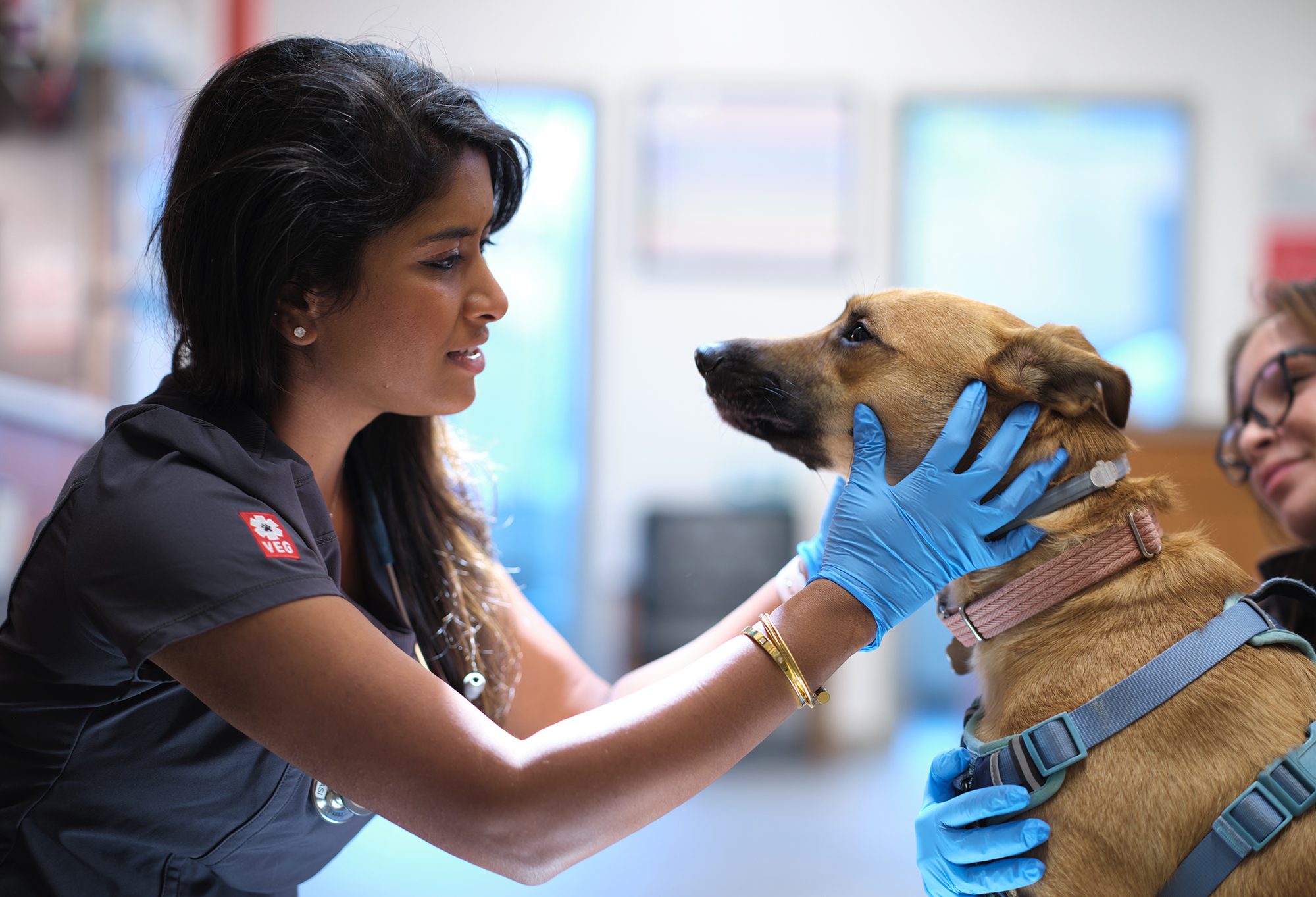
Mysterious Respiratory Illness in Canines – What Dog Owners Should Know
Dr. Kerri Nelson
Call & Speak with a doctor Open 24/7, Even Holidays!
Walk in today for:
Emergencies
Point-of-Care Ultrasound
Urgent Care
X-Rays
Diagnostics + Testing
End-of-Life Care
Surgery
Treatment + Hospitalization
Most dog owners have heard of kennel cough or its more formal name: canine infectious respiratory disease complex (CIRDC), and veterinarians know how to treat it. But the atypical CIRDC that first appeared in the Northwestern US states and has spread to over 12 states as of this writing, has been puzzling the veterinary medical community and setting off anxiety in dog owners.
Scientists have not yet confirmed the cause and there were rumors that antibiotics are not working (not exactly true, but we’ll get to that later on). While it’s natural to be alarmed, let’s take a beat. Although respiratory disease has been more prevalent among dogs this year, the percentage of dogs whose disease progresses to pneumonia and requires hospitalization is low. Furthermore, those who have contracted pneumonia usually respond well to treatment with antibiotics and oxygen therapy. Only in very rare instances do dogs require more invasive treatment like ventilator support.
RESPIRATORY SIGNS TO LOOK OUT FOR
Symptoms of this atypical canine respiratory illness are similar to kennel cough. This includes:
- Dry, hacking cough
- Nasal or ocular discharge
- Heavy or raspy breathing
- Lethargy or tiring easily
- Decreased appetite
- Fever
WHAT WE KNOW ABOUT THIS CANINE RESPIRATORY DISEASE
Knowing the facts can help ease a pet owner’s worry.
- This disease is contagious to canines but does not appear zoonotic, that is, it is not transmissible to humans
- The illness has not been linked to a toxin, as of this writing
- Initial hospitalization due to this illness is not commonly needed
- Infectious disease experts are studying cases to get to the root cause
At this time, there are theories that it’s coming from a new, small bacterium or that it’s a combination of a virus or bacterial infection. We’ll have to stay tuned as the scientific findings evolve.
WHAT DOGS ARE AT RISK OF DEVELOPING RESPIRATORY ILLNESS?
Though it appears that any breed can get this illness, there are some factors that make a dog more susceptible:
- Immunocompromised dogs
- Puppies
- Senior dogs
- Unvaccinated dogs – be sure to have your canine up to date on vaccinations, especially the Bordetella vaccine for kennel cough.
- Dogs who spend a lot of time at daycare, boarding facilities, and dog parks
CAN THIS MYSTERY ILLNESS IN DOGS BE TREATED?
Usually when a dog goes to the vet with kennel cough, we’ll give them a cough suppressant plus or minus antibiotics (typically doxycycline), and they recover within days. But this unidentified form of CIRDC doesn’t seem to respond the same way to first-line antibiotics. Dr. Kerri Nelson, Field Emergency Educator at Veterinary Emergency Group, notes “Dogs come in with what looks like kennel cough at first, then it can progress to pneumonia.”
So, what can you expect at the vet if your dog has kennel cough symptoms? To start, x-rays are a must; it’s the only way to know if a dog has pneumonia. If diagnosed with pneumonia, the treatment plan changes. That’s why x-rays are so important.
If pneumonia is not the diagnosis, your dog will be treated with:
- a cough suppressant
- +/- first-line antibiotic
- fluids, if dehydrated
If pneumonia has developed, your dog may be started on more broad spectrum antibiotics, since lighter antibiotics like doxycycline may not work. “Due to this resistance, we may have to use different antibiotics than what we’ve used in the past,” says Dr. Nelson.
At VEG (Veterinary Emergency Group), we’ll isolate the pet until we know if it is infectious or not. Dr. Nelson notes that not all pneumonia is infectious. Sometimes a dog can develop pneumonia from food particles that get trapped in the lungs. Either way, emergency treatment is essential.
WHY WILL MY DOG NEED HOSPITALIZATION?
Though very rare with this illness, one or more of the the following symptoms would need to be present for hospitalization to be in order:
- Fever – higher than 104ºF
- Not eating – in order to take antibiotics, your dog must be able to eat and keep food down
- Oxygen dependent – if a canine is already on oxygen or if they’re breathing too hard, they’ll need in-patient monitoring
PROTECTIVE MEASURES FOR DOG OWNERS
Minimizing the risk of contracting this canine illness is key. Here are some steps you can take, if possible:
- Avoid dog parks or anywhere dogs are gathering in large groups
- Avoid kennels or doggie daycare centers
- You might want to hold off on taking your dog to the groomer until we know more
- Is your dog part of a dog walker’s routine? Ask if they’ll walk your dog at a separate time from the rest of the pack
If your dog is diagnosed with this mystery illness and has been treated, it’s imperative to schedule a followup visit. Even if they seem “back to normal,” they need to be seen by a veterinarian. Follow up includes rechecking x-rays to see if the lungs are clearing up, and adjusting antibiotic therapy based on these results.
WHEN TO CALL VEG FOR HELP WITH YOUR DOG
Our dedicated VEG staff is here day and night (24/7) for walk-ins or you can call and speak with a doctor if you have questions. If your dog only has a cough, see your primary care veterinarian. However, if your dog has a cough combined with lethargy, or any other symptoms discussed here, visit a VEG location or an emergency veterinary hospital nearest you. And most of all, don’t panic. This illness may be a mystery, but we know how to treat it!

